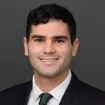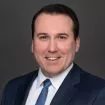On March 6, 2024, the U.S. Court of Appeals for the Second Circuit held in Do No Harm v. Pfizer Inc.1 that, to establish Article III standing under the summary judgment standard applicable to a motion for a preliminary injunction, associations attempting to establish standing through injuries to individual members must identify at least one injured member by name.2 The Second Circuit also held that, where plaintiffs seeking a preliminary injunction fail to prove standing (but have adequately pled it in their complaint), courts should dismiss the action without prejudice, rather than simply deny the injunction and allow the case to "proceed in the ordinary course."3
Regarding the proof required to establish Article III standing on a motion for preliminary injunction, the Second Circuit considered whether the U.S. Supreme Court's decision in Summers v. Earth Island Institute—which held that plaintiffs claiming associational standing must "identify members who have suffered the requisite harm"4— categorically requires plaintiffs to identify at least one such member by name.5 The Second Circuit held that associations must do so.6 Judge Richard Wesley penned a concurrence in which he disagreed with the majority's "unfounded 'real name' test" and warned that the majority's ruling will be "unfortunate" for "organizations everywhere, as "[a]dding a naming element to standing . . . will constrict access to the courts for organizations who seek redress of wrongs done to [their] members."7
After finding that the plaintiff association's refusal to name its injured members deprived it of associational standing, the Second Circuit dismissed Do No Harm's case without prejudice. By dismissing the action, rather than remanding it for further proceedings, the Second Circuit created a circuit split with the Sixth and D.C. Circuit Courts of Appeals.8 These circuits have ruled that an inability to establish standing, by itself, does not require dismissal.9
I. Factual and Procedural Background
Pfizer, a multinational pharmaceutical and biotechnology company, sponsors a Breakthrough Fellowship Program, which is an internship and employment program that looks "to increase minority representation at Pfizer" and enhance Pfizer's "pipeline of diverse leaders."10 Do No Harm is a nationwide, Virginia-based medical and political advocacy organization that describes its aim as "protect[ing] healthcare from radical, divisive, and discriminatory ideologies, including the recent rise in explicit racial discrimination in graduate and postgraduate medical programs."11 Founded six months before filing the complaint in this matter, Do No Harm has filed multiple actions challenging affirmative action policies and diversity, equity, and inclusion efforts in the healthcare sphere.12
In September 2022, Do No Harm sued Pfizer in the Southern District of New York on behalf of its members, alleging that Pfizer unlawfully excludes White and Asian-American applicants from the Fellowship in violation of federal and state law.13 Do No Harm contemporaneously filed motions for a temporary restraining order (which it later withdrew) and a preliminary injunction to bar Pfizer from selecting the 2023 Fellowship class pending resolution of the action.14 Do No Harm submitted anonymous declarations from two members—identified as "Member A" and "Member B"—in which the declarants swore that they (i) met Pfizer's eligibility requirements, (ii) self-identified as White or Asian-American, (iii) claimed that the Fellowship "categorically exclud[ed]" White and Asian-American applicants, and (iv) were "able and ready to apply" to the Fellowship.15
In December 2022, the district court denied Do No Harm's motion for a preliminary injunction.16 Applying the same burden to demonstrate standing that is required on a motion for summary judgment, the district court held that Do Not Harm lacked Article III standing because it failed to identify any allegedly injured member of its organization by name.17 After finding that Do No Harm lacked Article III standing, the district court dismissed the case without prejudice for lack of subject-matter jurisdiction.18
II. Second Circuit's Decision
On appeal, the Second Circuit affirmed the district court's decision, holding that an organization must identify by name at least one injured member to establish Article III standing and satisfy its evidentiary burden for being granted a preliminary injunction.19 The Second Circuit further held that, where a plaintiff seeking a preliminary injunction adequately alleges standing under a motion to dismiss standard but fails to come forward with sufficient evidentiary proof to demonstrate standing under a summary judgment standard, courts should dismiss the action in its entirety, rather than allow the case to proceed in the ordinary course, for instance by allowing the plaintiff to collect evidence sufficient to establish standing under the lower standard required at the pleadings stage.20
Standing
n deciding whether Do No Harm had established standing at the preliminary injunction stage, the Second Circuit reasoned that "mere allegations as would be appropriate at the pleading stage" would not suffice, and that, instead, Do No Harm must provide evidence of "specific facts," as required to establish standing on a motion for summary judgment.21 To decide the issue, the Second Circuit invoked the Supreme Court's decisions in Summers22 and FW/PBS, Inc. v. Dallas.23 In Summers, the Supreme Court noted that its prior cases "required plaintiff organizations to make specific allegations establishing that at least one identified member had suffered or would suffer harm."24 One of the "prior cases" referenced in Summers was FW/PBS.25 There, plaintiffs challenging a city ordinance argued that they had established standing by citing to a police affidavit stating that "two licenses" were revoked due to the ordinance.26 The Supreme Court found that plaintiffs in FW/PBS failed to establish standing, because that affidavit did not "identify the individuals whose licenses were revoked," and so plaintiffs failed to establish that the revoked licenses belonged to them.27 The Second Circuit found this analysis persuasive, noting that the Supreme Court considered the affidavit in FW/PBS "insufficient 'because it did not name individuals who were harmed' by the challenged [ordinance]."28
The Second Circuit held, consistent with an earlier decision by the First Circuit,29 that requiring organizations pleading associational standing to identify at least one injured member by name helps address "quintessential Article III standing concerns" by ensuring that the organization's members suffered an injury in fact that is concrete and particularized.30 In Do No Harm, the Court held that disclosure of a harmed member's real name would show that a member was "genuinely ready and able to apply" to the challenged program and demonstrate "the sincerity of the member's interest in applying" to the program.31 Further, an organization can sue on behalf of its members only when the members would otherwise have standing to sue in their own right, and while certain mechanisms allow parties to remain anonymous to the public, parties cannot remain anonymous to the court.32 It would be "incongruous, especially at the summary judgment stage," the court found, "to allow an association to rest its standing on anonymous member declarations when [the court] would not allow those members, as individual parties, to proceed anonymously to the court in their own right."33
Dismissal
Do No Harm also argued that, even if it did not present evidence sufficient to meet the standing threshold required for a preliminary injunction motion, it nonetheless established standing under the "less onerous standard" applicable at the pleading stage.34 According to Do No Harm, the district court thus erred by dismissing its claims, because Do No Harm sufficiently alleged that its members—even if anonymous—were "ready and able" to apply to an allegedly discriminatory program, as required to establish standing at the pleading stage.35
The Second Circuit disagreed and affirmed the district's court's dismissal order.36 The court noted that the "operative question" is "whether the plaintiff had standing under the standard applicable at that stage of the litigation."37 According to the Second Circuit, "the no-standing determination is just that — a determination that the plaintiff lacks standing."38 Contrary to Do No Harm's argument that dismissal would result in "fast-forward[ing] this case to another stage," the court concluded that Do No Harm's argument "would amount to reversing the case to a prior stage."39 In other words, "[w]ithout standing there is no jurisdiction. Without jurisdiction, [the court] cannot act."40
III. Conclusion
Do No Harm may assist defendants in impact litigation brought by organizations relying on anonymous individuals. In such cases in the Second Circuit, if the plaintiff organization seeks preliminary injunctive relief, the organization must identify at least one injured member by name to establish standing. Furthermore, if the organization fails to establish standing on its motion for a preliminary injunction, the action should be dismissed. This is timely, given recent, high-profile Supreme Court decisions concerning affirmative action, freedom of religion, freedom of speech, and reproductive rights, in which some plaintiffs may prefer to remain anonymous.41 The Second Circuit's approach – which requires cases to be dismissed for lack of standing – creates a split with the Sixth and D.C. Circuit Courts of Appeals. This may lead plaintiff organizations to avoid filing in the Second Circuit if at all possible. The deadline for Do No Harm to file a petition for a writ of certiorari to the U.S. Supreme Court is June 4, 2024. As of this writing, Do No Harm has not filed a petition.
Footnotes
1. 96 F.4th 106 (2d Cir. 2024).
2. Id. at 109.
3. Id.
4. 555 U.S. 488, 499 (2009).
5. Do No Harm, 96 F.4th at 114–15.
6. Id. at 108–09.
7. Id. at 122, 126 (Wesley, J., concurring).
8. See Food & Water Watch, Inc. v. Vilsack, 808 F.3d 905, 913 (D.C. Cir. 2015) (remanding case of plaintiffs that failed to establish standing for preliminary injunction, so plaintiffs could collect evidence to establish standing); Memphis A. Philip Randolph Inst. v. Hargett, 978 F.3d 378, 386 (6th Cir. 2020) (quoting id.) ("an inability to establish a substantial likelihood of standing requires denial of the motion for preliminary injunction, not dismissal of the case").
9. See id.
10. Do No Harm, 96 F.4th at 109 ("The Fellowship consists of five parts: a ten-week summer internship for rising college seniors; two years of full-time employment after graduation; a fully paid scholarship to a full-time, two-year MBA, MPH, or MS Statistics program; summer internships between the first and second years of the fellow's master's program; and, finally, a return to Pfizer for postgraduate employment.").
11. Id. at 110.
12. Do No Harm v. Pfizer Inc., 646 F. Supp. 3d 490, 495 (S.D.N.Y. 2022), aff'd, 2024 WL 949506 (2d Cir. Mar. 6, 2024); Litigation, DO NO HARM, https://donoharmmedicine.org/litigation/ (last visited Apr. 1, 2024).
13. Do No Harm, 96 F.4th at 110.
14. Id. at 111.
15. Id.
16. Id.; see also Do No Harm, 646 F. Supp. 3d at 500, 518.
17. Do No Harm, 96 F.4th at 111–12; Do No Harm, 646 F. Supp. 3d at 505 (The district court also held that, "[e]ven if Plaintiff had identified Members A and B by name, the pleadings and evidence provided by Plaintiff do not establish that its members have suffered injury in fact, another requirement for Article III standing").
18. Do No Harm, 646 F. Supp. 3d at 517.
19. Do No Harm, 96 F.4th at 109, 113–14.
20. Id. at 109, 120–21.
21. See id. at 114–15 (quoting Cacchillo v. Insmed, Inc., 638 F.3d 401, 404 (2d Cir. 2011)).
22. Summers, 555 U.S. at 498–99.
23. 93 U.S. 215, 235 (1990).
24. Summers, 555 U.S. at 498.
25. Id.
26. FW/PBS, 93 U.S. at 235; Do No Harm, 96 F.4th at 115–16.
27. FW/PBS, 93 U.S. at 235; Do No Harm, 96 F.4th at 116.
28. Do No Harm, 96 F.4th at 116 (emphasis in original).
29. See Draper v. Healey, 827 F.3d 1, 3 (1st Cir. 2016) (Souter, J.) ("[T]he Supreme Court has said that an affidavit provided by an association to establish standing is insufficient unless it names an injured individual" (citing Summers, 555 U.S. at 498)).
30. Do No Harm, 96 F.4th at 116..
31. Do No Harm, 96 F.4th at 116 (according to the Second Circuit, "to actually apply for the Fellowship, an applicant has to disclose their name, in addition to the other listed requirements," and it thus "makes sense that a would-be applicant's willingness to disclose their name—at least to the court—is an essential component of the ready-and-able showing").
32. Id. at 117.
33. Id.
34 Id. at 113.
35 Id. at 113, 119.
36 Id. at 121.
37 Id. at 120.
38 Id. at 120–21.
39 Id. at 121 (citing Summers, 555 U.S. at 498–99).
40 Id. at 120 (quoting Obama v. Klayman, 800 F.3d 559, 570 (D.C. Cir. 2015) (Sentelle, J., dissenting)).
41 See, e.g., Students for Fair Admissions, Inc. v. President & Fellows of Harvard College, 600 U.S. 181 (2023); Groff v. DeJoy, 600 U.S. 447 (2023); 303 Creative LLC v. Elenis, 600 U.S. 570 (2023); Dobbs v. Jackson Women's Health Org., 597 U.S. 215 (2022).
To subscribe to Cahill Publications Click Here
The content of this article is intended to provide a general guide to the subject matter. Specialist advice should be sought about your specific circumstances.




